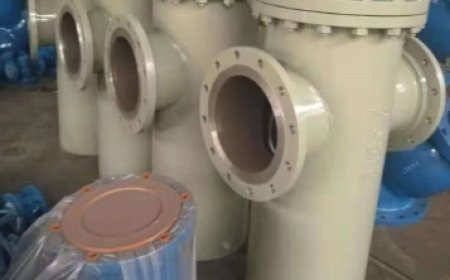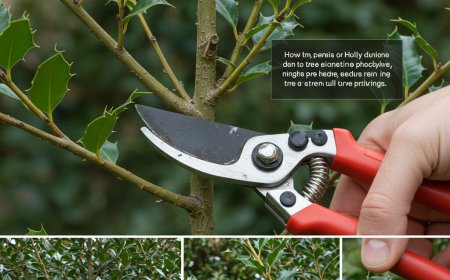Essential Guide to Buying Indoor and Outdoor Trampolines
Learn how to select the ideal indoor and outdoor trampoline. Discover what to consider when selecting size, materials, safety features, and budget to find the perfect fit for kids and families.

Choosing the right play equipment can transform both small and expansive backyards into energetic gathering spots for children and parents alike. A high-quality trampoline for sale can provide hours of healthy exercise and fun, but only when you select a design that suits your space, your familys needs, and your budget. This guide walks through the most important considerations for both indoor and outdoor setups without focusing on any single brand. Whether you seek an airy backyard bounce zone or a compact indoor trampoline to brighten a playroom, youll learn how to compare models, weigh safety features, and make a confident purchase.
Assessing Your Available Space
Before browsing specific models, take a careful inventory of the area where you plan to use them. For an outdoor unit, measure your lawn or patio surface, looking for a level spot clear of low branches overhead.
Indoor installations require at least six feet of head clearance and a three-foot buffer on all sides to prevent accidental impacts with walls or furniture. Mapping the dimensions on paper or with masking tape will help you visualize how much room remains once the trampoline is in place, ensuring the final purchase aligns with your real-world constraints.
Understanding Frame Construction and Materials
A durable frame lies at the heart of any reliable trampoline. Look for steel tubing with powder coating to resist rust and corrosion, especially in humid climates. The jumping mat should be made from UV-resistant polypropylene or similar performance fabrics that can withstand sun exposure without degrading.
Reinforced stitching around the spring holes prevents tears from developing under repeated stress. When comparing cheaper imports to premium models, youll often see differences in weld quality and padding thicknessfeatures that directly influence both lifespan and user safety.
Evaluating Safety Features
Safety must be your top priority, whether the trampoline is situated indoors or outdoors. A full-height enclosure net reduces the risk of falls off the mat surface, while high-density spring covers shield hands and feet from gaps.
Examine how the enclosure attaches to the frame: robust rings or double-stitched ties outperform flimsy clips that can loosen over time. For added stability, consider models with built-in anchor kits that secure the frame to the ground, preventing tipping or shifting during dynamic play sessions.
Considering Weight Capacity and Age Recommendations
Every design carries a maximum weight limit dictated by spring strength, frame integrity, and mat elasticity. Confirm that the model you choose accommodates both your heaviest jumper and any anticipated growth.
Many manufacturers specify both single-jumper and combined load capacities, which is critical information when planning group play. If you intend to purchase a trampoline for kids under the age of six, look for units specifically tested for younger users, as these often featuresofter rebound settings to protect developing joints.
Comparing Price Points and Warranty Coverage
Trampoline investments can range from budget options under $200 to high-end systems costing over $1,000. Balance up-front expense against warranty terms and expected longevity. Extended coverage on the frame and springs signals manufacturer confidence in product durability.
Look for models that include free replacement parts or offer dedicated customer support hotlines. When a trampoline carries a multi-year guarantee, you gain recourse against hidden defects that might otherwise emerge after the initial fun has worn off.
Maintenance Considerations for Longevity
Routine upkeep ensures safe, continuous use year after year. Outdoor units benefit from removable enclosure nets and UV-resistant padding that can be hosed off to remove pollen or debris. Inspect springs monthly for rust and apply a light coat of silicone lubricant if squeaks develop.
Store all padding indoors during prolonged wet seasons to prevent mildew. Maintaining a simple log of inspection dates and any repairs helps you stay ahead of small issues before they escalate into costly replacements.
Frequently Asked Questions
How do I choose between an indoor model and an outdoor model?
Selecting between an outdoor and an indoor version largely depends on the available space and intended usage patterns. Outdoor models tend to offer larger diameters and heavier-gauge frames, built to withstand the weather. Indoor units trade size for portability and compact designs, making them suitable for basements or playrooms. If you plan to bounce year-round in a living area, opt for an indoor trampoline designed to minimize noise and protect hardwood floors.
Can multiple children use the trampoline at once?
While shared play invites social interaction, the safest practice remains one jumper at a time unless the manufacturer specifically certifies multi-user use. When children of different weights bounce together, the lighter participant may be lifted unexpectedly by the heavier jumpers rebound. To reduce collision risk, supervise all bounce sessions closely and enforce turns to maintain a fun yet controlled environment.
What maintenance tasks are most crucial?
The biggest maintenance priorities include regular inspection of springs and frames for signs of corrosion or fatigue padding checks for tears and enclosure net integrity. Cleaning the mat surface with mild soap and water prevents the buildup of dirt and sweat that can degrade materials. Tightening hardware connections twice a year and storing removable components indoors during off-seasons preserves product life and safety.
Is assembly difficult for a first time buyer?
Most trampolines ship in several boxes containing frame sections, spring packs and padding. Manufacturers include step-by-step guides and most homeowners complete assembly in two to four hours with common hand tools. Enlist a helper for spring installation to speed up the process and ensure safety when stretching springs into place.
Where do I find a reliable trampoline for sale?
When seeking a reputabletrampoline for sale look for retailers or online marketplaces that specialize in active play equipment. Read customer reviews to confirm real-world service experiences and delivery timelines. Established sellers often include optional installation services and post-purchase support, offering extra reassurance for families new to purchasing large recreational gear.
With thoughtful evaluation of space requirements build quality safety features and warranty terms you can confidently select the ideal trampoline for your home. By following the guidance above your next purchase will deliver years of active healthy bouncing for children and parents alike.






































![Play99 Login & Registration Guide for Indian Users [2025 Update]](https://www.atlantanewsplus.com/uploads/images/202507/image_140x98_6870c1df7bfcd.jpg)
